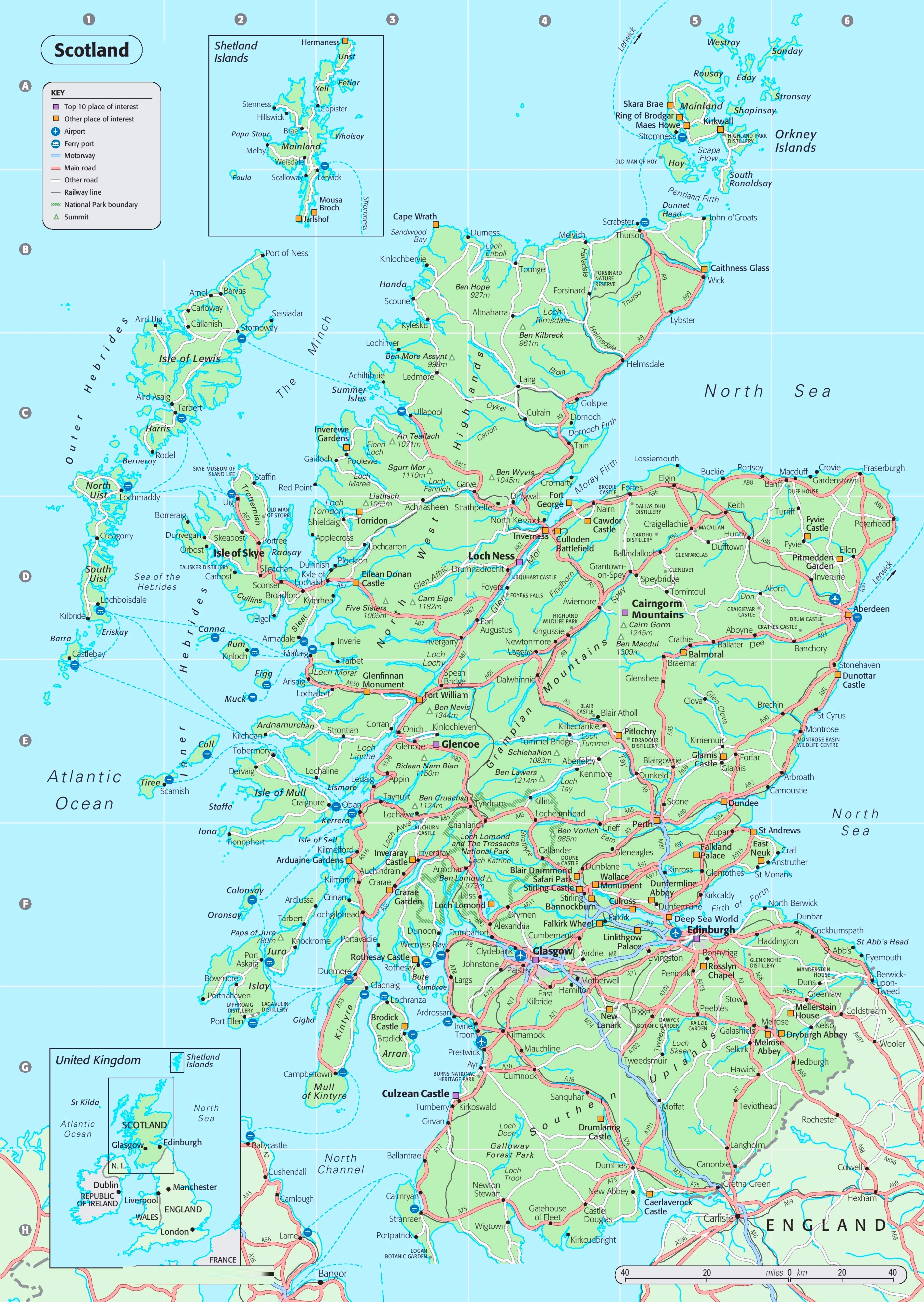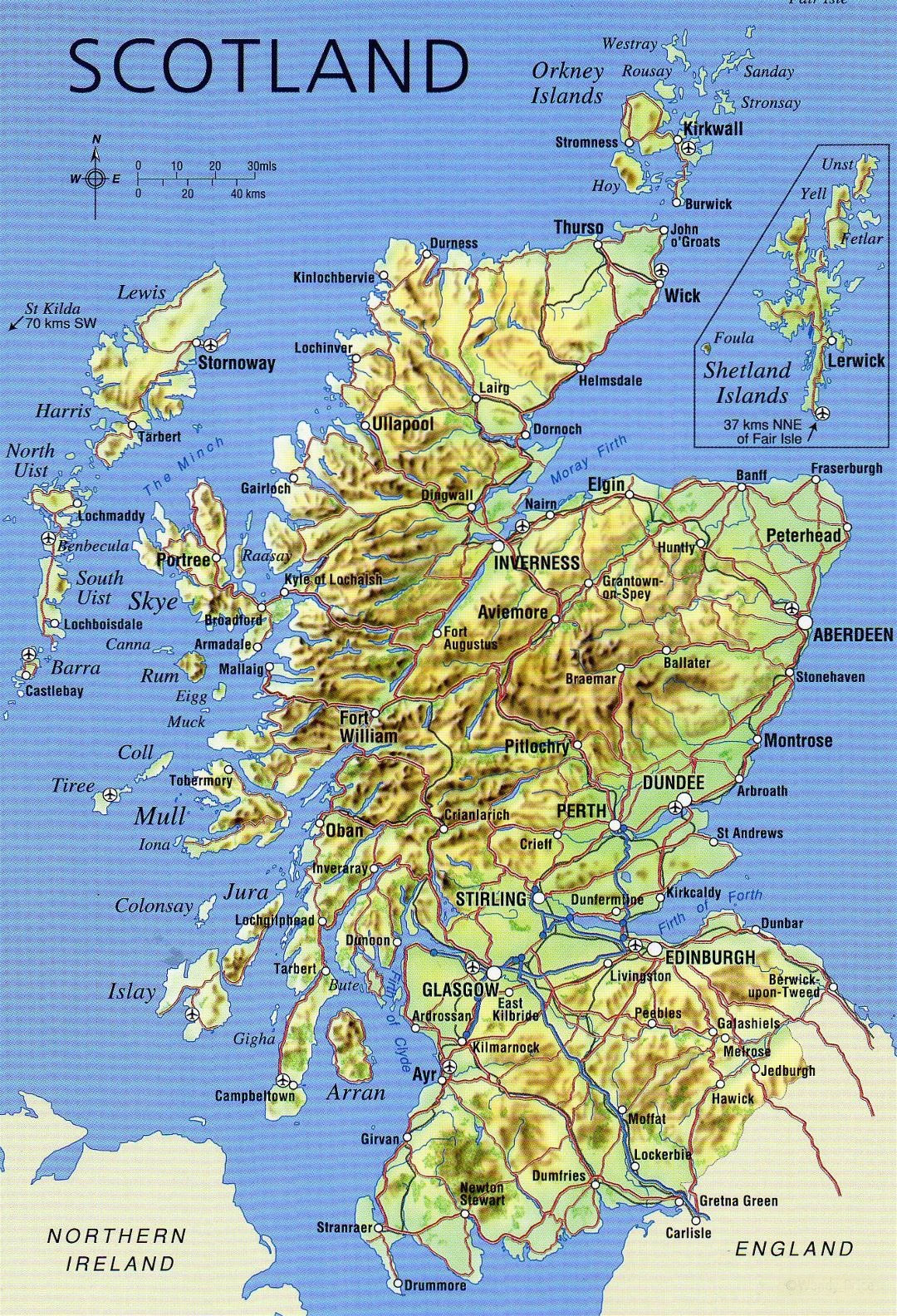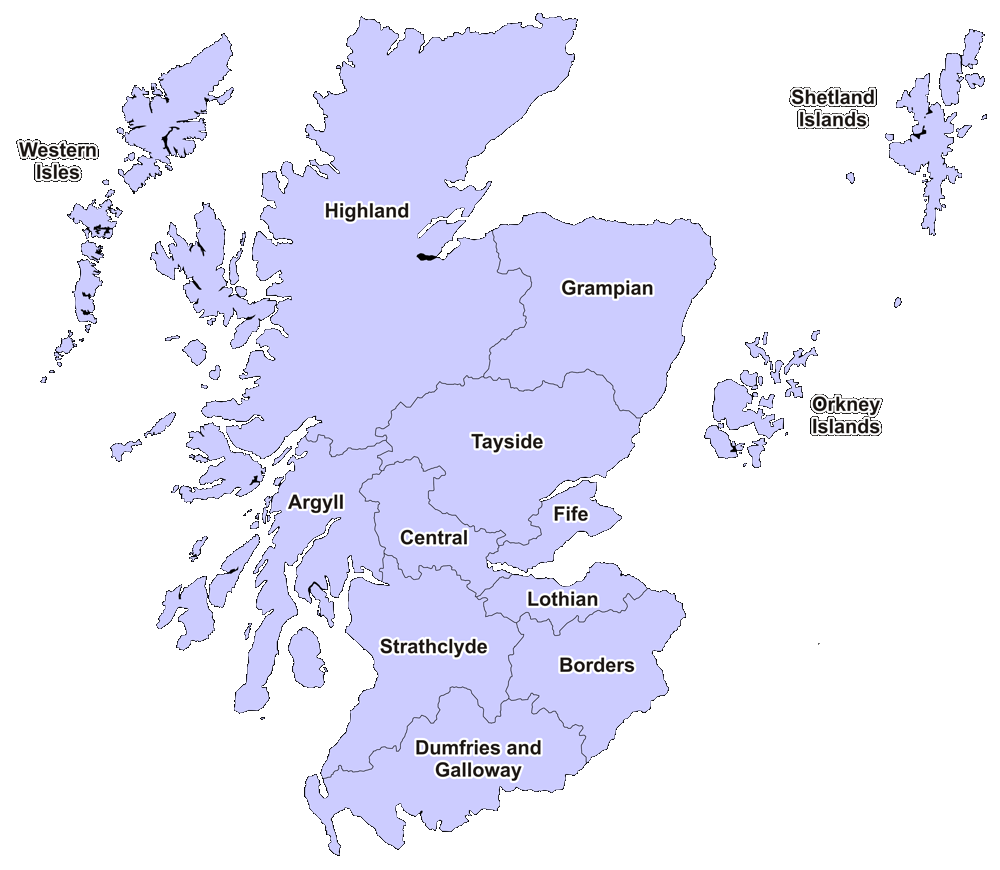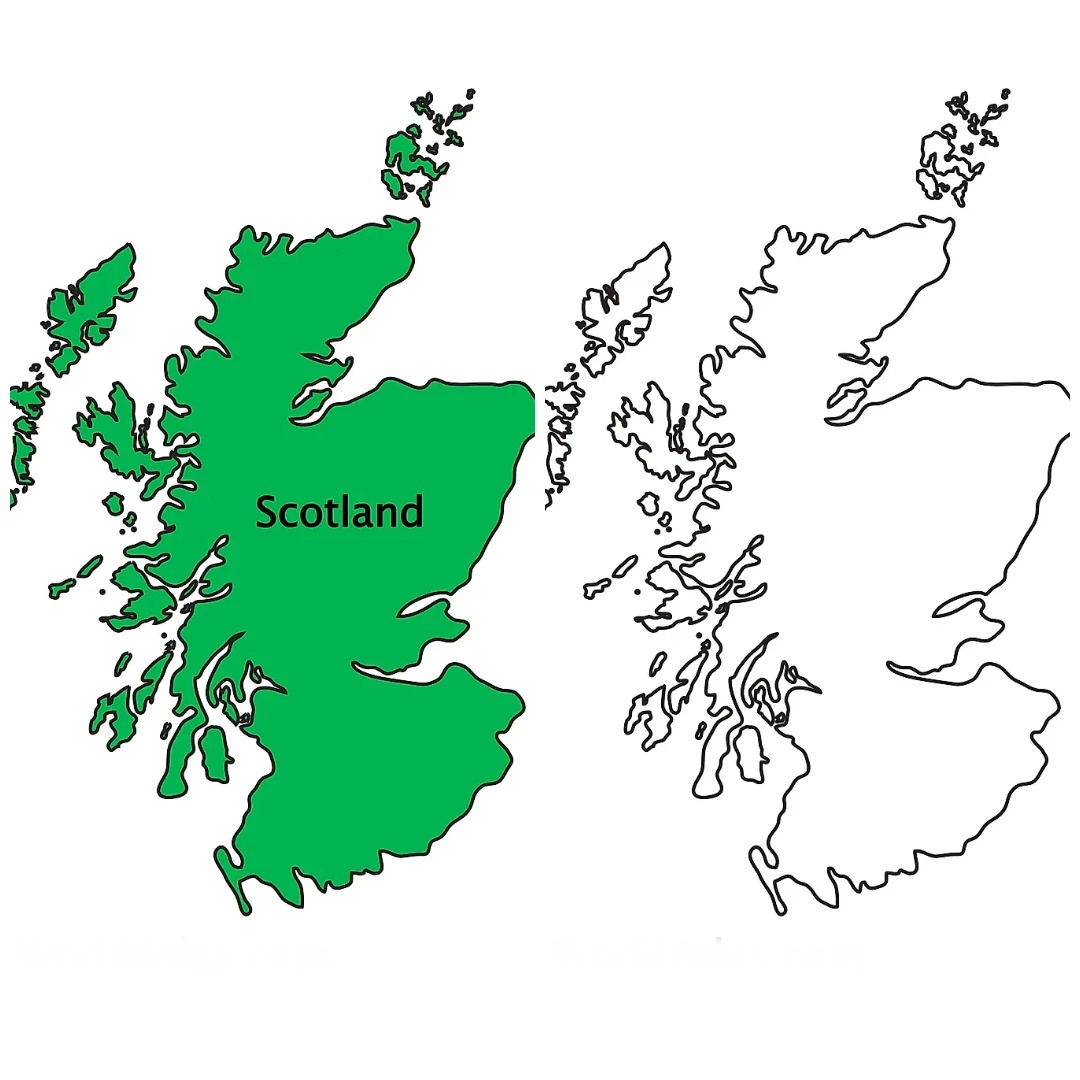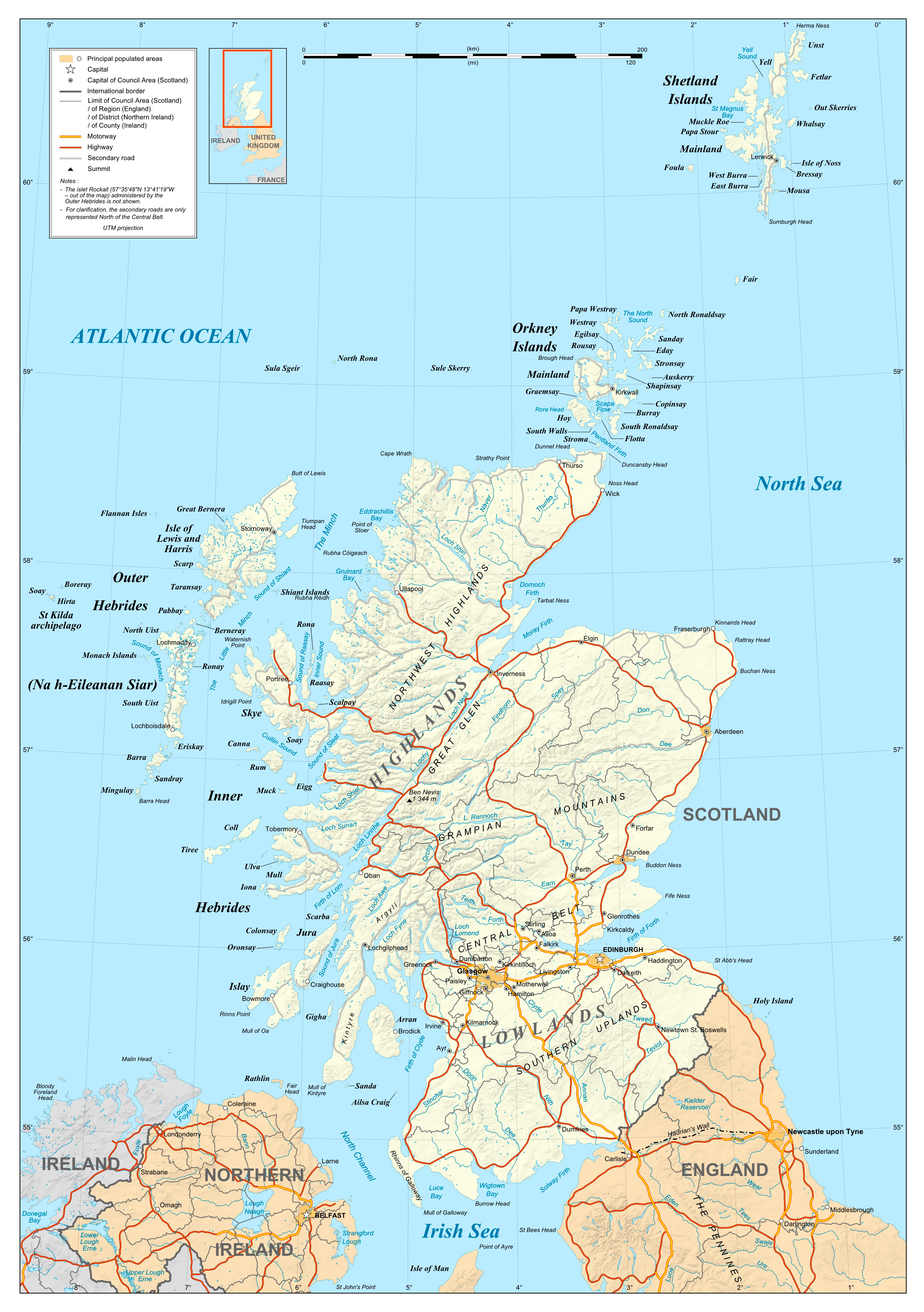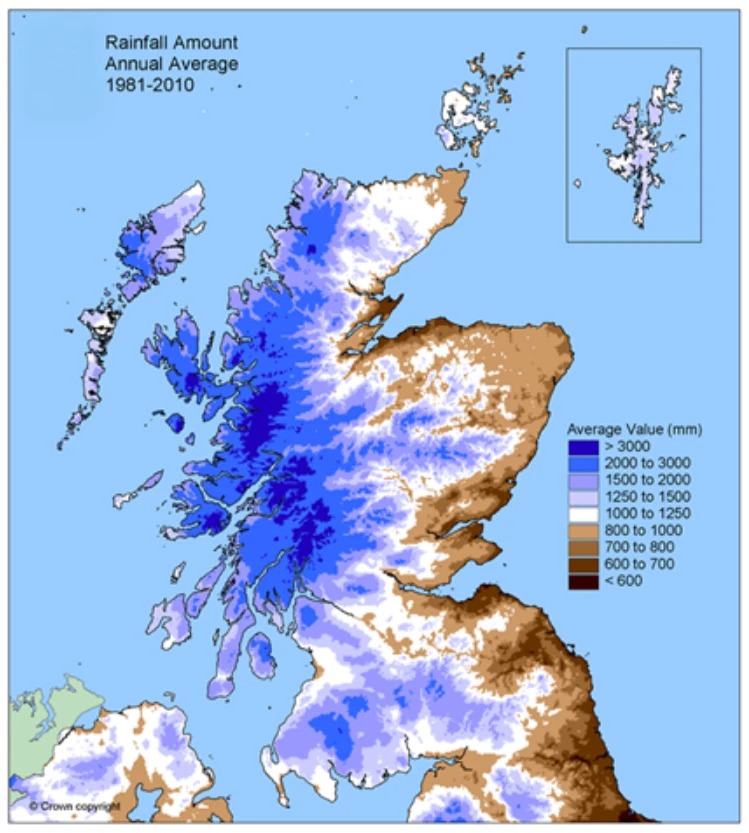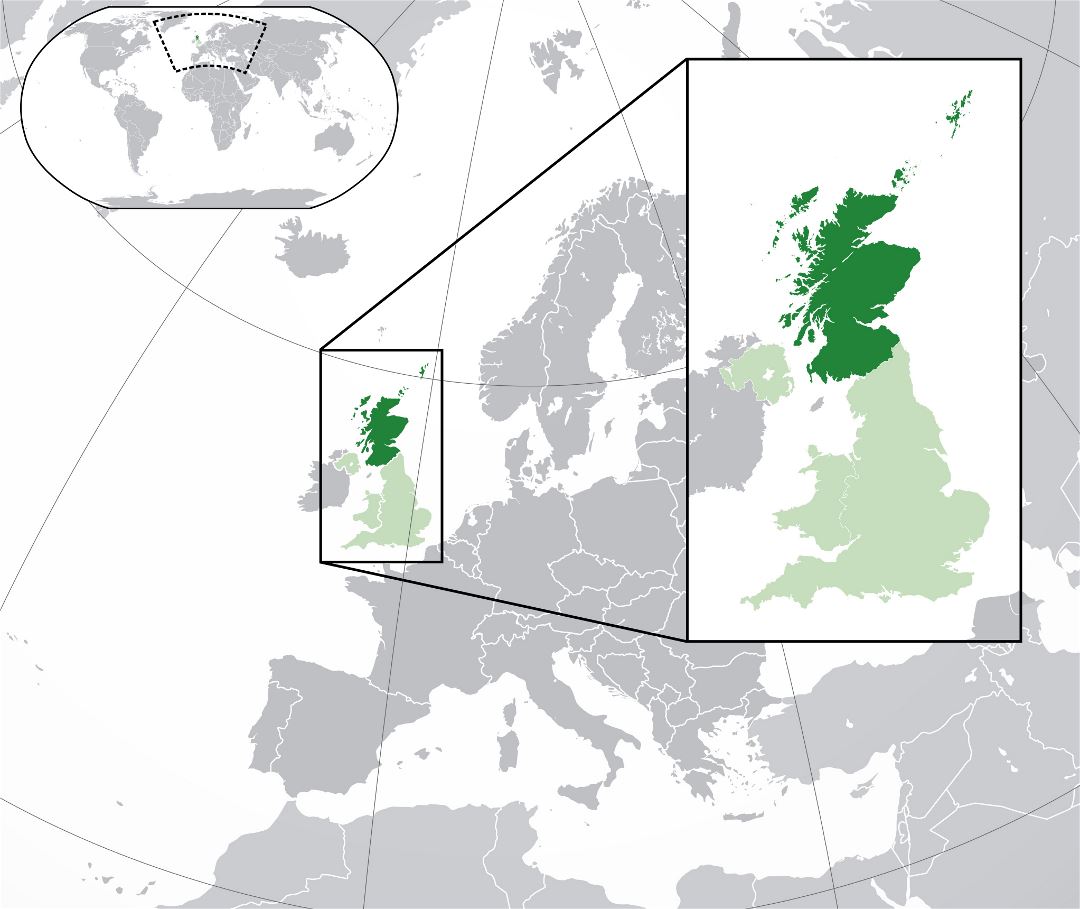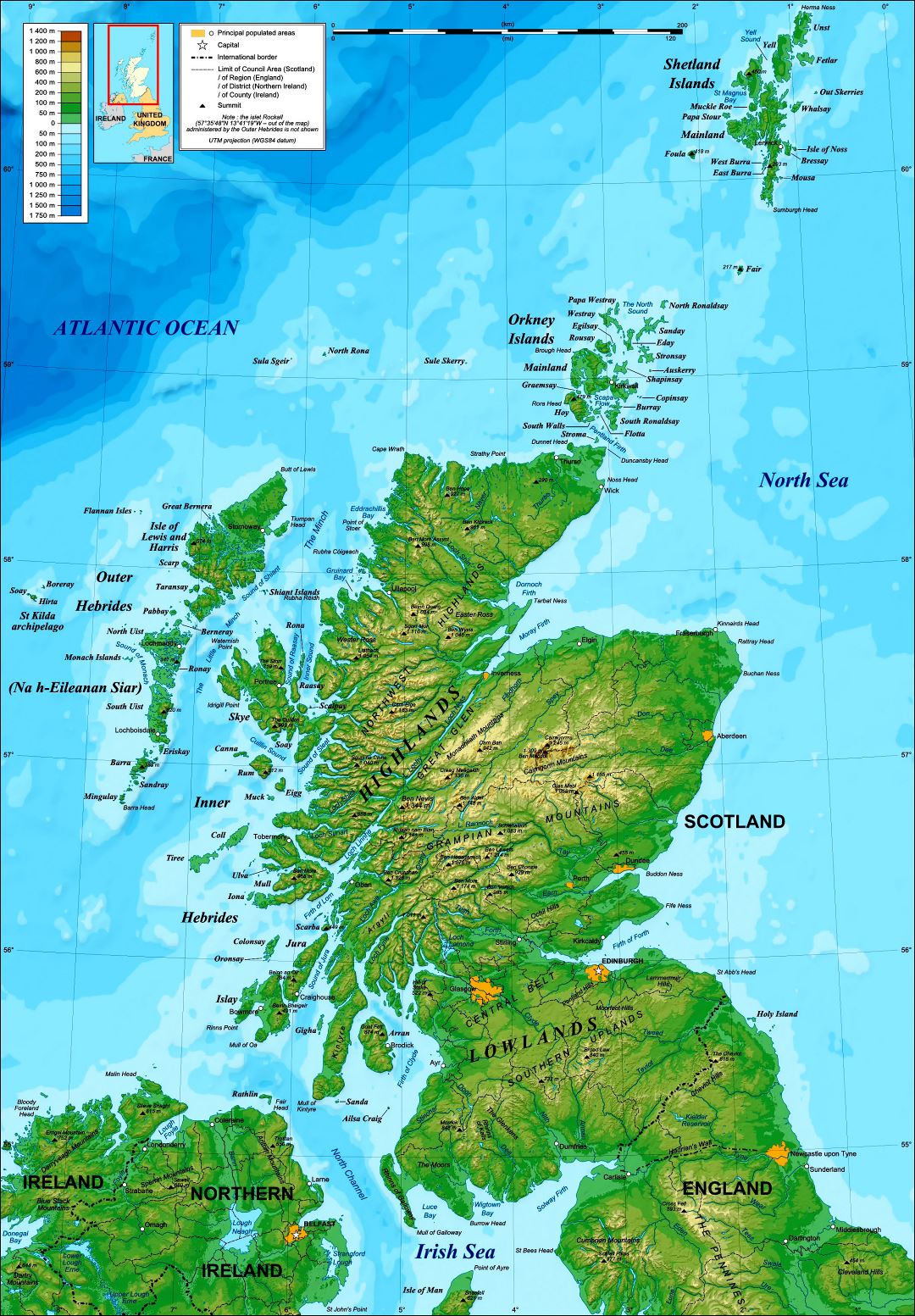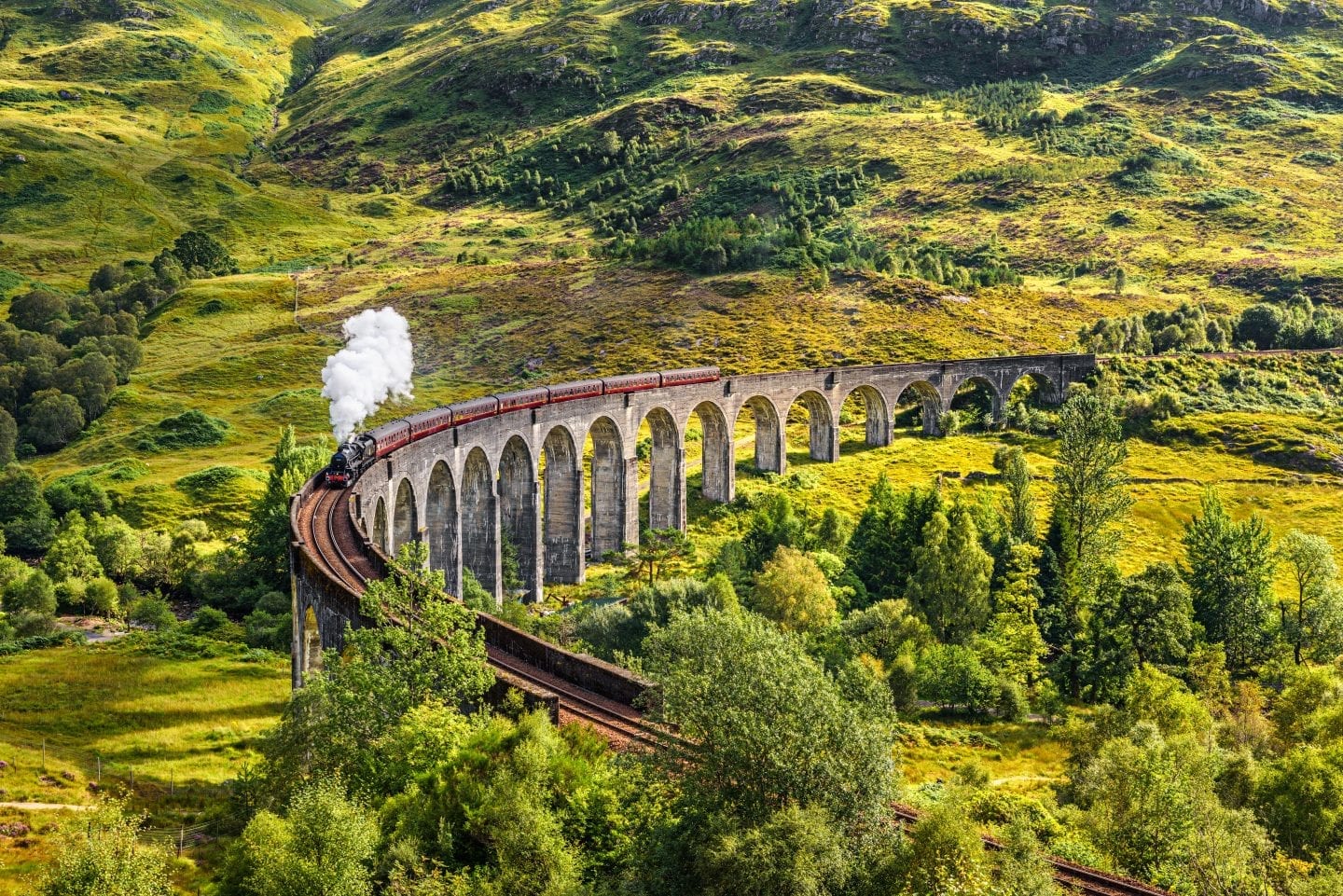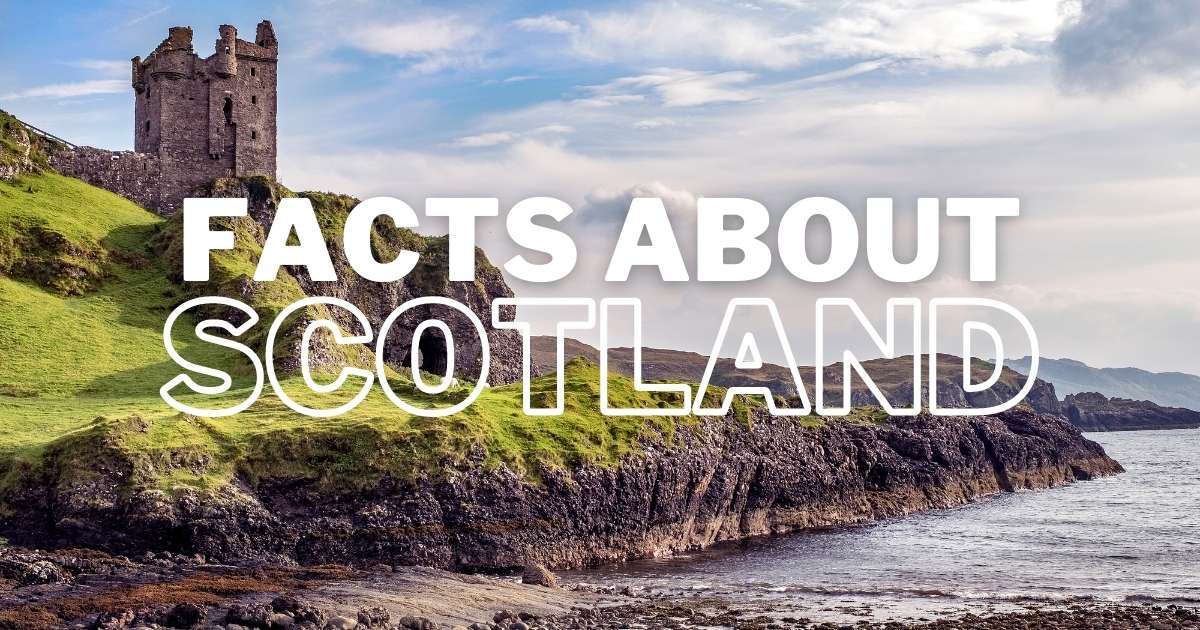Scotland Map - Explore Cities, Highlands, And Islands In Detail
Learn everything you need to know about Scotland with our detailed map guide. Discover key cities, explore the Highlands, and plan your dream trip.
Mar 07, 20259.6K Shares184.9K Views
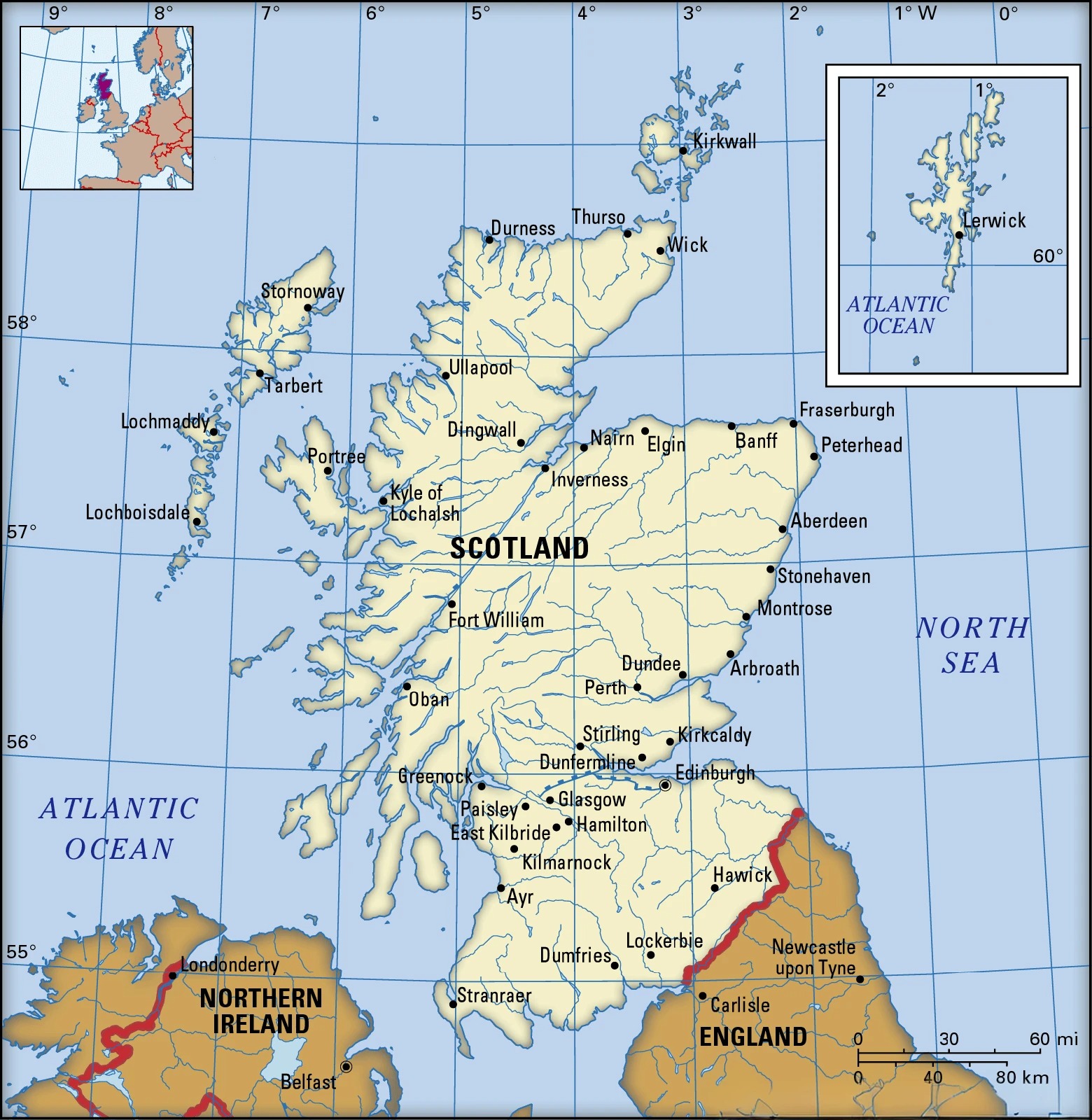
Scotland, a country of captivating landscapes and rich history, lies in the northern region of the United Kingdom. From its bustling cities like Edinburgh and Glasgow to the tranquil beauty of the Highlands and islands, Scotland offers a unique blend of tradition and modernity.
Maps serve as a gateway to exploring this land of legends, showcasing its diverse terrain, vibrant cities, and hidden treasures. This guide will take you through everything you need to know about Scotland, enriched with maps and vital insights for travelers, historians, and enthusiasts alike.
Overview Of Scotland
Scotland spans an impressive 77,933 sq. km (30,090 sq. miles), making it the second-largest country in the UK. Geographically, it shares a southern border with England and is surrounded by the North Sea, Atlantic Ocean, and Irish Sea.
The country is divided into two distinct regions: the Highlands and the Lowlands. The Highlandsboast rugged mountains like Ben Nevis, the highest peak in the UK at 4,413 feet, and vast, untouched landscapes that captivate adventurers.
The Lowlands, home to the majority of the population, feature rolling hills and fertile valleys, where cities like Glasgowand Edinburghthrive as hubs of culture and economy.
Scotland’s coastline is equally diverse, stretching over 6,160 miles and featuring dramatic cliffs, sandy beaches, and island groups like the Hebrides, Orkney, and Shetland.
Detailed Map Of Scotland
Quick Facts About Scotland
To help you get acquainted with Scotland, here’s a quick glance at key information:
| Fact | Details |
| Official Name | Scotland |
| Population | ~5.4 million |
| Area | 30,090 square miles (77,900 km2) |
| Capital | Edinburgh |
| Largest City | Glasgow |
| Dialing Code | +44 |
| Currency | Pound Sterling (£) |
Geographical Diversity Of Scotland
Scotland's landscape is a testament to its geological history, characterized by a striking contrast between the rugged Highlands and the more gentle Lowlands.
Highlands And Islands
The Highlands occupy a significant portion of northern and western Scotland, renowned for their dramatic scenery. Towering mountains, including the majestic Ben Nevis, the highest peak in the British Isles at 4,413 feet, dominate the landscape.
Deep glens, sparkling lochs like Loch Ness, and a myriad of islands, from the Inner Hebrides to the Outer Hebrides, contribute to the region's unique character.
The Highlands offer a wealth of outdoor activities, from hiking and climbing to wildlife spotting and fishing.
Lowlands
In contrast, the Lowlands, situated in the southern and eastern parts of Scotland, are characterized by rolling hills, fertile valleys, and extensive areas of farmland.
The Central Lowlands, also known as the Midland Valley, are particularly significant, encompassing major cities like Glasgow and Edinburgh and playing a crucial role in Scotland's industrial and commercial history.
Coastline
Scotland boasts an extensive coastline, stretching over 6,160 miles and featuring a diverse array of coastal features, including towering cliffs, sandy beaches, and rocky shores. The dramatic coastline has played a vital role in Scotland's history, influencing its maritime heritage and shaping its coastal communities.
Water Bodies
Numerous lochs, or lakes, dot the Scottishlandscape, contributing to its picturesque beauty. Loch Ness, renowned for the legendary Loch Ness Monster, is one of the largest freshwater lakes in the British Isles.
Loch Lomond, the largest freshwater lake in Britain by surface area, is situated in the Trossachs National Park and offers stunning scenery.
Scotland is also home to several major rivers, including the River Tay, the longest river in Scotland, and the River Clyde, which flows through Glasgow and played a crucial role in the city's industrial past.
Map Of Scotland With Cities
A map of Scotland is incomplete without highlighting its vibrant cities. Each urban center offers a unique blend of history, culture, and modern life, contributing significantly to the country's rich tapestry.
Edinburgh:The capital city, renowned for its medieval architecture, cobbled streets, and Edinburgh Castle, a majestic fortress perched on an extinct volcano. Edinburghis a hub of culture, boasting world-class museums, art galleries, and festivals, including the famous Edinburgh International Festival.
Glasgow:Scotland's largest city, Glasgow is a vibrant metropolis with a rich industrial heritage. It is known for its distinctive architecture, including the iconic Glasgow School of Art, and its thriving arts and music scene. Glasgow is also a major commercial center, with a bustling port and a diverse economy.
Aberdeen:Often referred to as the "Granite City" due to its many buildings constructed from local granite, Aberdeen is a major center for the oil and gas industry. It boasts a beautiful waterfront, numerous parks and gardens, and a thriving cultural scene.
Inverness:The capital of the Highlands, Inverness is a gateway to the stunning scenery of the Scottish Highlands. It offers a mix of historical attractions, including Inverness Castle, and modern amenities, making it an ideal base for exploring the surrounding region.
Dundee:Situated on the east coast, Dundee is a city with a rich maritime history and a growing reputation as a center for culture and design. The V&A Dundee, a stunning museum designed by Japanese architect Kengo Kuma, is a major landmark.
Stirling:Located in the heart of Scotland, Stirling is a historic city renowned for its iconic Stirling Castle, a powerful fortress that played a crucial role in Scottish history. The city also offers beautiful scenery, with the Ochil Hills providing a picturesque backdrop.
Perth:Known as the "Fair City," Perth is a charming city located in central Scotland. It offers a mix of historical attractions, including Scone Palace, and modern amenities, making it a popular destination for visitors.
Scotland’s Regions
Scotland is a land of rich contrasts, with each region offering its own distinct character, landscapes, and attractions. Whether you’re seeking natural beauty, cultural heritage, or modern vibrancy, Scotland’s regions have something for everyone.
The Highlands
The Highlands are the epitome of Scotland’s rugged and untamed beauty, defined by:
- Dramatic Landscapes: Towering mountains such as Ben Nevisand scenic glens like Glencoe.
- Outdoor Adventures: Hiking in the Cairngorms National Park, kayaking on its countless lochs, and wildlife spotting.
- Cultural Heritage: Ancient Highland clans, castle ruins, and the fabled Loch Ness.
- Isle of Skye: Isle of Skyeknown for its breathtaking scenery, including the Quiraingand the Fairy Pools.
- Whisky Trail: Follow the Malt Whisky Trailthrough distilleries like Glenfiddich and Macallan.
The Lowlands
The Lowlands, a region of rolling hills and fertile plains, represent Scotland’s cultural and population hub:
- Urban Centers: Edinburgh and Glasgow dominate, offering world-class museums, shopping, and festivals.
- Historical Sites: Stirling Castle and the Wallace Monumentreflect the region’s rich past.
- Scenic Countryside: The Pentland Hillsand Loch Lomond & The Trossachs National Parkare perfect for nature lovers.
The Islands
Scotland’s islands, scattered across its northern and western waters, offer a sense of timelessness and rugged charm:
- Hebrides: The Inner and Outer Hebrides are known for their white sandy beaches, like Luskentyre, and cultural vibrancy, including Gaelic traditions.
- Orkney: Famous for its Neolithic Orkneysites, including Skara Brae, as well as abundant wildlife and coastal beauty.
- Shetland: Scotland’s northernmost region, blending Nordic influences with Scottish culture. Explore Shetland Ponies, Jarlshofruins, and the famous Up Helly Aa Viking Festival.
For an inspiring glimpse into the Outer Hebrides, watch this video:

Weave your own story, Outer Hebrides
Council Areas
Scotland is divided into 32 council areas, each with its own administrative and cultural identity:
- Major Cities: Aberdeen City, Edinburgh City, Glasgow City, Dundee City.
- Coastal Areas: Argyll and Bute, Angus, and the Western Isles.
- Rural Retreats: Highland, Dumfries and Galloway, and Perth and Kinross.These regions manage local governance while showcasing Scotland’s diversity, from urban hubs to quiet rural areas.
Each of Scotland’s regions holds its own treasures, making the country a rich mosaic of experiences, whether you’re exploring majestic landscapes, delving into history, or experiencing the warmth of its people.
Outline Map Of Scotland
The blank map illustrates Scotland, situated in the northern part of the United Kingdom. It is available for download and can be used for educational purposes such as map-pointing or coloring activities.
The outline map highlights Scotland's position in the northern region of the United Kingdom.
Different Types Of Scotland Maps
Maps of Scotland come in various formats, each tailored to specific needs, from understanding administrative divisions to exploring the country’s diverse landscapes. Here's a detailed guide to the key map types and their applications:
1. Political Map
Political maps showcase Scotland’s 32 council areas, providing a clear view of the country's administrative framework. These maps are commonly used for:
- Understanding Governance: Highlighting boundaries and jurisdictions for councils such as Aberdeenshire, Highland, and Glasgow City.
- Local Elections and Public Services: Useful for identifying council responsibilities like healthcare, transportation, and education.
Key Features:
- Labels for cities like Edinburghand Glasgow.
- Distinction between mainland regions and island councils like Orkney, Shetland, and Na h-Eileanan Siar (Western Isles).
2. Road Map
Road maps are crucial for navigating Scotland’s intricate network of motorways, A-roads, and scenic byways. They help locals and tourists:
- Plan Scenic Drives: Iconic routes like the North Coast 500or Glencoe Valley.
- Explore Remote Areas: Ensuring accessibility to isolated regions in the Highlands and islands.
- Ferry Routes: Marking connections between islands and the mainland, such as routes from Oban to Mullor Scrabster to Orkney.
Key Features:
- Road classifications for highways, rural roads, and paths.
- Fuel stations, rest stops, and scenic viewpoints.
3. Tourism Map
Tourism maps cater to visitors seeking Scotland’s rich history, natural beauty, and cultural hotspots. These maps feature:
- Must-Visit Attractions: Landmarks like Edinburgh Castle, Stirling Castle, Urquhart Castle, and Loch Ness.
- Trails and Walks: Paths like the West Highland Way, John Muir Way, and Cateran Trail.
- Festivals and Events: Locations for events like the Edinburgh Festival Fringeand Highland Games.
Special Features:
- Regional cuisine trails for whisky tasting (e.g., Speysidedistilleries).
- Highlights of national parks like Cairngorms National Parkand Loch Lomond & The Trossachs.
4. Climate Map
Climate maps help visitors prepare for Scotland’s varied weather, which is influenced by its rugged geography and proximity to the Atlantic.
- Rainfall: The west coast, including Fort William, experiences heavy rain, while the east, including Aberdeen, is drier.
- Temperature: Summers are mild, with cooler conditions in the Highlands, and winters often bring snow to higher elevations.
- Seasonal Guidance: Spring and summer are ideal for hiking, while autumn is perfect for foliage and wildlife spotting.
Uses:
- Planning outdoor activities like skiing in the Cairngorms or hiking in Glencoe.
- Preparing for the unpredictable weather with appropriate gear.
5. Locator Map
Locator maps place Scotland in its broader geographical context. They are commonly used in:
- Education and Travel: Understanding Scotland’s location within the UK and Europe.
- Cultural Context: Identifying Scotland’s proximity to Ireland, Norway, and England.
Features:
- Neighboring seas: North Sea, Atlantic Ocean, and Irish Sea.
- Key connections: Airports, ferry routes, and train lines linking Scotland to other countries.
6. Topographical Map
Topographical maps highlight Scotland’s rugged terrain, from its towering mountains to its deep glens.
- Mountain Ranges: Peaks like Ben Nevis, Cairngorms, and Cuillin Hills.
- Lochs and Rivers: Detailed mapping of Loch Ness, Loch Lomond, the River Tay, and more.
- Outdoor Adventures: Ideal for hikers, climbers, and nature enthusiasts exploring Scotland’s wilderness.
Attractions And Travel Tips
Scotland is a treasure trove of iconic landmarks, stunning natural beauty, and rich history.
Top Attractions
Here are some must-visit attractions to enhance your experience:
Edinburgh Castle And The Royal Mile
- Why Visit: Perched atop Castle Rock, Edinburgh Castleoffers panoramic views of the city and centuries of history. The Royal Mile, connecting the castle to the Palace of Holyroodhouse, is filled with shops, restaurants, and historical sites.
- Highlights: St. Margaret’s Chapel, the Crown Jewels, and the Stone of Destiny.
Loch Ness
- Why Visit: Beyond the legend of the Loch Ness Monster, this vast freshwater loch is surrounded by breathtaking scenery.
- Activities: Take a boat tour, visit Urquhart Castle, or hike the Great Glen Way.
The Isle Of Skye
- Why Visit: Famous for its rugged beauty, Skye is a paradise for photographers and nature lovers.
- Highlights: Fairy Pools, the Old Man of Storr, and Quiraing.
Stirling Castle
- Why Visit: A symbol of Scottish independence, Stirling Castlehas played a pivotal role in the country's history, including battles like Bannockburn.
- Highlights: The Great Hall, Royal Palace, and views of the surrounding countryside.
The Cairngorms National Park
- Why Visit: The Cairngorms National Parkis a haven for outdoor enthusiasts, this park offers hiking, skiing, and opportunities to spot native wildlife like red squirrels and golden eagles.
- Highlights: The Reindeer Centre, Rothiemurchus Forest, and Aviemore.
The Outer Hebrides
- Why Visit: These islands boast unspoiled beaches, ancient standing stones, and a rich Gaelic culture.
- Highlights: Luskentyre Beach, Callanish Standing Stones, and Harris Tweed workshops.
Glencoe
- Why Visit: Known for its dramatic glacial landscapes and ties to the infamous Glencoe Massacre of 1692.
- Activities: Hiking trails, scenic drives, and historical tours.

10 Best Places to Visit in Scotland - Travel Video
Travel Tips
Here are some practical travel tips to enhance your experience:
Best Time To Visit
- May to September: These months offer milder weather, longer daylight hours, and vibrant festivals like the Edinburgh Fringe.
- Spring (March-May): Blooming landscapes and fewer crowds.
- Autumn (September-November): Beautiful fall foliage and quieter attractions.
Transportation
- Driving: Rent a car to explore remote areas like the Highlands and islands. Be prepared for narrow, single-track roads.
- Public Transport: Trains and buses connect major cities and towns. Ferries serve the islands.
- Scenic Routes: Try the North Coast 500 or the West Highland Line.
Accommodation
- Options: From luxury hotels and quaint B&Bs to castle stays and camping. Book early during peak season.
- Unique Stays: Consider a night in a traditional croft or eco-lodge.
What To Pack
- Clothing: Layers, waterproof jackets, and sturdy shoes for hiking.
- Essentials: Bug spray for midges (especially in summer) and an adapter for UK plugs.
Local Etiquette
- Respect the "Right to Roam" policy but follow guidelines when accessing private land.
- Learn a few Gaelic phrases for the islands, where the language is celebrated.
Currency And Costs
- Currency: Pound Sterling (£).
- Tips: Use contactless payments and check for VAT refunds when shopping as a visitor.
Fun Facts And Trivia
Scotland is a land of fascinating quirks and rich history. Here are some intriguing tidbits to delight and surprise:
Coastal Wonders
- Scotland’s coastline stretches an impressive 6,160 miles, featuring dramatic cliffs, sandy beaches, and rugged inlets.
- With over 790 islands, only around 130 are inhabited, each offering unique traditions and landscapes.
Birthplace Of Golf
- Scotland is the home of golf, with the game originating in the 15th century.
- The Old Course at St Andrews, established in 1552, is one of the world’s oldest and most famous golf courses.
The Unicorn Is The National Animal
Scotland’s mythical side shines with its national animal, the unicorn, symbolizing purity and power.
Whisky Heritage
Known as the “water of life” or uisge-beatha in Gaelic, Scotch whisky is among the country’s most famous exports, with over 120 active distilleries.
Deepest Loch
Loch Morar, in the Highlands, is the deepest freshwater loch in the UK, plunging to depths of 1,017 feet.
Inventors And Innovations
Scotland is the birthplace of numerous groundbreaking inventions, including the telephone (Alexander Graham Bell), the tire (John Boyd Dunlop), and the television (John Logie Baird).
Edinburgh’s Literary Claim
Edinburgh was the first city in the world to be designated a UNESCO City of Literature in 2004, celebrating its rich literary heritage.
Language Diversity
Scotland recognizes three languages: English, Scots, and Scottish Gaelic. Around 57,000 people still speak Gaelic.
Tallest Mountain
Ben Nevis, towering at 4,413 feet, is the highest peak in the British Isles, drawing hikers and climbers year-round.
World's First Fire Brigade
Edinburgh formed the first-ever municipal fire brigade in 1824, setting a standard for urban safety worldwide.
FAQ About Scotland
How Many Provinces Are There In Scotland?
Scotland does not have provinces. Instead, it is divided into 32 council areas, which serve as local administrative regions. These council areas include places like Glasgow City, Edinburgh City, Highland, and Aberdeenshire, each with its own unique character and governance.
What Is Scotland Famous For?
Scotland is renowned for its dramatic landscapes, castles, whisky, Highland games, and the Loch Ness Monster. It is also celebrated for its contributions to art, science, and literature.
How Many Islands Are There In Scotland?
Scotland has over 790 islands, with about 130 inhabited, including the Hebrides, Orkney, and Shetland islands.
What Is The Best Time To Visit Scotland?
The ideal time to visit Scotland is between May and September, when the weather is milder, and daylight hours are longer, offering more opportunities to explore.
What Are Scotland's Main Cities?
The major cities in Scotland include Edinburgh, Glasgow, Aberdeen, Dundee, Inverness, and Stirling, each with unique attractions and history.
Is Scotland Part Of The UK?
Yes, Scotland is a part of the United Kingdom, alongside England, Wales, and Northern Ireland, but it has its own legal and educational systems and a devolved government.
Conclusion
Scotland, with its rich history, breathtaking landscapes, and vibrant culture, is a treasure trove of experiences waiting to be discovered. From the towering peaks of Ben Nevis to the cobbled streets of Edinburgh, every corner of Scotland tells a story steeped in heritage and natural beauty.
Its diverse regions, friendly locals, and fascinating traditions make it a destination that leaves a lasting impression on all who visit.
Pack your bags, embrace the magic of the Highlands, and get ready to immerse yourself in the enchanting charm of Scotland!
Latest Articles
Popular Articles
